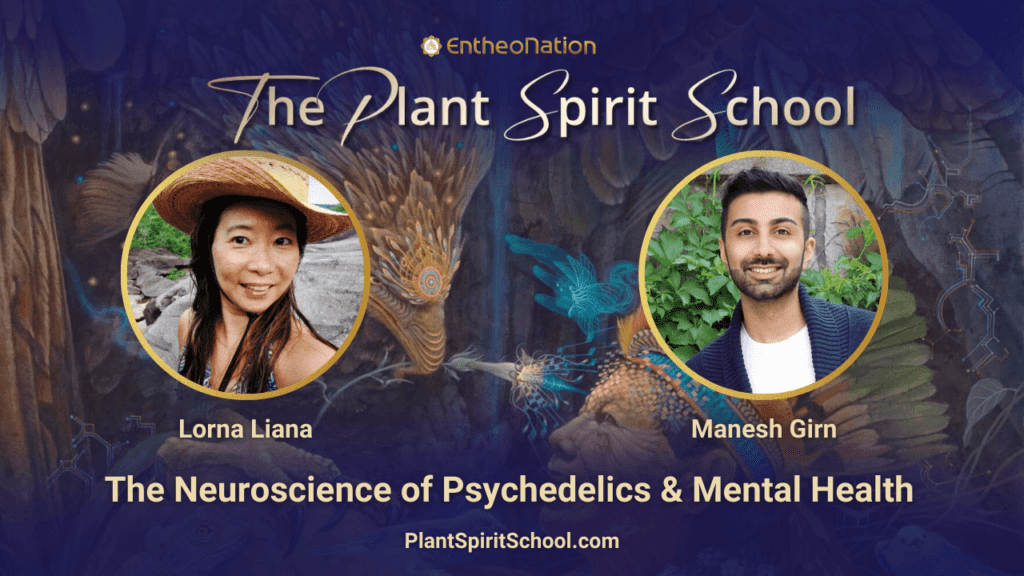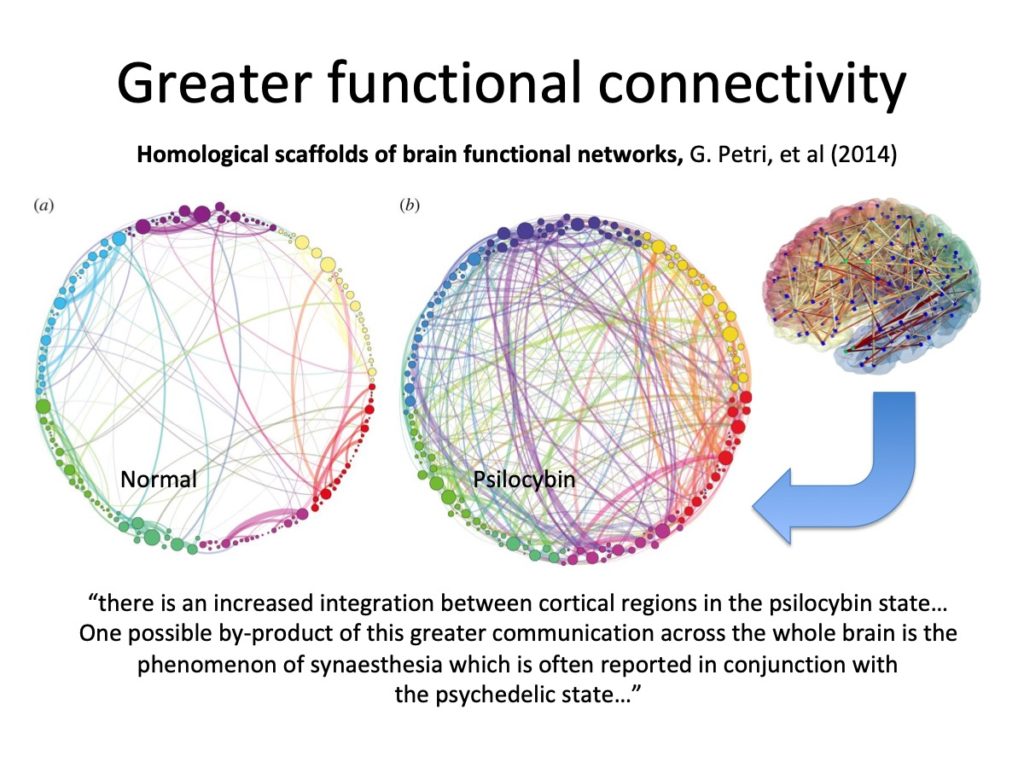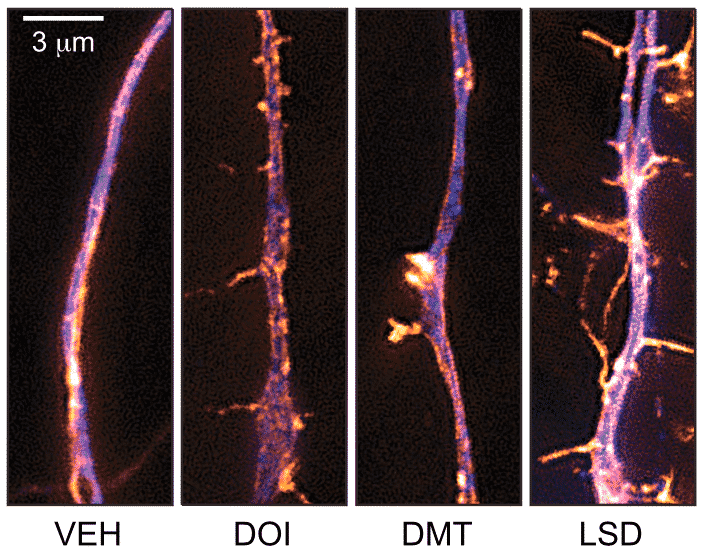The Neuroscience of Psychedelics and Mental Health with Manesh Girn

Manesh Girn, PhD candidate in neuroscience at the McGill University in Montreal, Canada, joins Lorna for an interview in which he summarizes some of the latest scientific findings and perspectives on how psychedelics can help facilitate lasting healing and transformation.
The field of psychedelic science is rapidly developing – as reports of therapeutic benefits and low harm risk profiles of psychedelics grow in numbers, and drug regulation and clinical trials of these substances advance, neuroscientists, psychiatrists, psychotherapists, and the like keep joining the ranks and pushing the envelope of the emerging discipline of psychedelic science.
There are several areas of exploration of neural correlates of psychedelic experiences which are important for understanding the big picture of how these substances affect us mentally. In this interview, Manesh explains the basics of each, as well as the first-of-its-kind comprehensive model of the mechanisms behind psychedelic effects.
Serotonin activation
What we know so far is that classic psychedelic substances, such as DMT, LSD, mescaline, and psilocybin, all share a few common ways of affecting the brain. The most important effect, and one that we understand to be related to much of their cognitive action, is the connection these compounds make with the serotonergic system – specifically, with the 5-HT2A (serotonin 2A) receptor.
Because these receptors are normally activated by the neurotransmitter serotonin, they recognize these psychedelic substances as their ‘key’ and behave as if normally triggered by serotonin. Serotonin itself is molecularly extremely similar to tryptamines, the class of compound that some of these classic psychedelics belong to. Their activation of the serotonergic system is considered so central in their effects that they are commonly referred to as ‘serotonergic psychedelics.’
Can some psychedelics overload the serotonergic system? Learn in The Good, The Bad, and the Soul: Drug Interactions and Ayahuasca with Ben Malcolm
5-HT2A receptors are widely distributed throughout the central nervous system, especially in brain regions essential for vital cognitive processes such as learning and memory. Their activation, while not completely understood, has been shown in many studies to be highly correlated with cognition-enhancing and hallucinogenic effects.
The activation of 5-HT2A receptors has also been linked in many studies with the therapeutic effects classic psychedelics can have on mental conditions such as depression, anxiety, and PTSD. Pharmaceutical medications used for managing these conditions (SSRIs being the most common ones) also interact with the serotonergic system, but in a different way – instead of activating the receptors themselves, they prevent the absorption of serotonin by neuronal endings, thereby increasing the amount of available serotonin in the interneuronal space. This artificial level must be maintained by regular consumption of the drugs, and dependence is typically formed very quickly.
Hyperconnectivity
It’s important to understand that the parts of the brain that contain high densities of 5-HT2A receptors are also the parts that exert strong influence on the entire brain. This basically means that, by activating these areas, the whole central nervous system in turn starts communicating in an interconnected, or hyperconnected manner. This process is behind the colorful images circulating online depicting how psilocybin increases neural connections, which come from a landmark 2014 neuroimaging study.

Fascinatingly, it’s also been found that some functional connections, like those we experience in normal, resting states, get fortified and remain more active for a long time after the effects are finished – this is how we, quite literally, rewire our brains with psychedelics.
Manesh shared that:
“[When the brain] has many different connections, there are many different possible configurations of those connections that can exist… So, basically, the brain is able to be more free and it’s able to enter into all sorts of states it’s not usually able to enter into – you’re able to explore states of consciousness which deviate from our normal consciousness, and have this kind of diversity and richness of experience that we don’t usually have, which is related to a kind of diversity in our brain activity. And then those two combined with the fact that psychedelics seem to boost neuroplasticity – if you put that all together, it’s like [psychedelics] put the brain in this state where it’s very flexible; there’s so many more new possible connections you can go into and it also makes more the brain more plastic so now we can create new patterns and have them last.”
Increased signal diversity
What Manesh refers to as ‘different configurations’ is a phenomenon called “increased global neural signal diversity” and has been found in a 2017 study by a group of scientists including Anil Seth, a professor of neuroscience at the University of Sussex, and Robin Carhart-Harris, one of the leading researchers in the field of psychedelic science.
The group found that LSD, ketamine, and psilocybin induced more random brain activity than normal while under the influence. Anil Seth said that “What we find is that under each of these psychedelic compounds, this specific measure of global consciousness level goes up, so it moves in the other direction. The neural activity becomes more unpredictable”. The scans found the most notable effects in parts of the brain that are known to be important for perceptions.
The signals recorded suggest that the psychedelic state lies above conscious states such as wakeful rest and REM sleep, if these states can be defined by neural signal diversity.
Carhart-Harris elaborated that this increase in randomness in brain activity appeared to reflect a deeper and richer conscious state. “People tend to associate phrases like ‘a higher state of consciousness’ with hippy speak and mystical nonsense. This is potentially the beginning of the demystification, showing its physiological and biological underpinnings… Maybe this is a neural signature of the mind opening.”
DMN
It’s currently thought that this state of expanded ability of mental exploration is related to psychedelics’ impact on the default mode network (DMN), which is a set of well-connected brain regions that are engaged when people are in a “resting state”.
Manesh explained that this network is:
“active in all sorts of complex aspects of our thinking that almost define us as humans: our ability to escape the present moment and think about the past or imagine the future, our ability to imagine or think about the beliefs and mental states of other people, our ability to identify things as being related to ourselves or not… It helps us maintain the personal narrative of who we are, who we were, who we’re going to be… It’s involved when we interpret movies even, and read books, and interpret narratives; it’s involved in a whole variety of processes which involve our memory and our concepts in order to contextualize and understand our experience.”

The active brain regions making up the Default Mode Network and the Task-Positive Mode Network
Some psychedelics, like LSD and psilocybin, seem to disintegrate this network when administered, and this decrease in modularity and connectivity within the DMN, coupled with an increase in the brain’s overall connectivity, is what many researchers believe is most deeply correlated with the diverse cognitive effects of psychedelics, as well as a deeper feeling of losing the boundaries between the self and everything else, known as ego dissolution.
According to Robin Carhart-Harris, who is at the bleeding edge of DMN research, the default mode network “seems to be the best candidate that we have for the biological underpinnings of the sense of self.” This conclusion is supported by numerous studies which have found a correlation of the deactivation of the DMN and the perceived sense of ego dissolution.
REBUS
After many years of research, synergizing everything discovered about the DMN and the state of hyperconnectivity, neural signal diversity, divergent thinking, mystical state and egoless sensation that our brains and minds adopt while under the effect of psychedelics, Carhart-Harris has developed what is likely the first biological model correlated to the psychological effects of psychedelic substances.
This model, which he named ‘relaxed beliefs under psychedelics’ (REBUS) and the anarchic brain, suggests that psychedelics facilitate a weakening of higher-order beliefs. By increasing the entropy of neural signals and thereby stimulating creative thought, entrenched patterns of thought become weakened, and the brain is able to communicate more freely within itself, letting more information ‘flow upstream.’ In this weakened state, the belief is able to be updated or, better said, ‘re-weighted.’
Manesh was kind enough to explain this model in lay terms:
“[Psychedelics] make your sense of certainty about your beliefs and your assumptions less rigid [and] more fluid, and you’re all of a sudden not so certain about who you are or how the world works… And these kinds of fundamental beliefs you took for granted, you start to question them or they just don’t seem correct anymore, and through that process you become more open to receiving new information, new perspectives and insights – open to seeing the world in a different way because now you’ve escaped from this conceptual prison we create for ourselves through our ego structures and defense mechanisms, and unconscious beliefs… So, through their activity on the brain, they give us this temporary respite from all these things – we’re able to see outside of the bubble that we’re in, and this gives you an opportunity to then take this new information you’re now getting access to and use it to create lasting change.”
Neurogenesis / Neuroplasticity
Finally, not only do psychedelics increase the connectivity in our brains, but they actually catalyze a process that normally only happens before we’re born. This event is called neurogenesis and it means the creation and growth of neurons.
Many studies have reported this effect, but one of the most comprehensive and widely referenced ones was published in 2018 by David Olson, again, one of the most prolific and reputable psychedelic scientists with 30+ years in the field.
The research concludes that “serotonergic psychedelics [DMT; LSD; MDMA; noribogaine; ketamine] are capable of robustly increasing neuritogenesis and/or spinogenesis [sprouting of neurites and spines from neuron cells and axons, respectively] both in vitro and in vivo. These changes in neuronal structure are accompanied by increased synapse number and function… Our results underscore the therapeutic potential of psychedelics and, importantly, identify several lead scaffolds for medicinal chemistry efforts focused on developing plasticity-promoting compounds as safe, effective, and fast-acting treatments for depression and related disorders.”

Spinogenesis promoted by three serotonergic psychoactive substances: amphetamine (DOI), DMT, and LSD. From Olson, 2018
That psychedelics can promote neurogenesis and neuroplasticity is a discovery of incredible importance. It not only means that these substances may be able to help ‘repair’ dysfunctional neural processes in those who suffer from mental and neurodegenerative disorders, it also means that they can help extend the longevity of our brains and allow them to better retain their functionality throughout our tumultuous lives.
READ MORE: Psilocybin and Neurogenesis: The Long-Term Effects of Magic Mushrooms on Your Brain and Can Ayahuasca Grow Your Brain Cells?
Watch the interview with Manesh Girn to learn more about:
- The most recent findings on how psychedelic substances work in the brain
- How psychedelics can help people overcome mental health conditions and live more meaningful lives
- What science says about the importance of integration and the efficacy and usefulness of microdosing
About Manesh Girn
Manesh Girn is currently completing his PhD dissertation in Neuroscience at McGill University in Montreal, Canada. He has led or co-authored over a dozen scientific publications and book chapters on topics including psychedelics, meditation, daydreaming, and the default-mode network (DMN).
He is also conducting research on the brain mechanisms underlying LSD, psilocybin, and DMT in collaboration with the most prominent psychedelic researcher of today, Dr. Robin Carhart-Harris, and others from the Imperial College London Center for Psychedelic Research.
In his free time, Manesh also runs a YouTube channel – called The Psychedelic Scientist – where he discusses the latest findings in psychedelic science in an easy to understand yet thorough way.
